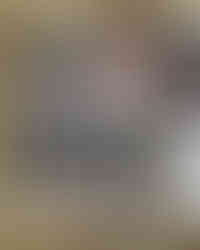An addition to SJ 01. WOOD - BOOKSTORE - FOLLOWING A WILDER PATH
- Sentimental Journal Magazine
- 30 jan 2024
- 2 minuten om te lezen
Bijgewerkt op: 31 jan 2024
Today, with more distractions than ever, it's no wonder that some people are pushing back, especially given the last few years, which have forced us to re-evaluate what's important. The book Living Wild, with beautiful pictures by Joanna Maclennan and words by Oliver Maclennan, share stories about some of these people who are withdrawing - fully or partially - from the miraculous technologies we've all come to depend on. The interplay between home, work and the landscape lies at the very heart of every story, offering a range of alternatives which provoke and inspire, as you can see from these previews of two of them.
A wooded retreat (Norway)
In a house in Norway, on a peninsula southwest of Oslo, Ingvild Flesland - the owner - reflects about the beauty of the changes of seasons, which she missed living in San Francisco, where she met her husband Olaf. The house, with a timber frame from the 1780s, shows a mix of new and old styles, also thanks to the changes made by the couple. With the aim of ‘bringing the nature inside’, Ingvild has grown most of the several plants that inhabit the house from seeds or cuttings. In a largely improvised garden, she grows instead a variety of plants with the dream of making it more self-renewing. While the number of properties around them has gradually risen, their house and its land remain striking and unique. In the garden and interior alike, there is a tangible sense of freedom, of spontaneity, and of watching something evolve. 'We are non perfectionists,' she says, revealing, if only briefly, a secret of their success.
Into the wilderness (Finland)
In a cabin in the woods near Helsinki, Hilja Isotalo immerses herself in forest guide training, anticipating the rigours of Lapland, minus the wolves and bears. Her father instilled in her a deep love of nature, as well as an appreciation for the little things in life, and her boyfriend Markku introduced her to camping.
Now, she claims that being outside keeps her alive, and that she could sit for many hours just watching the birds feeding. To prepare for the challenges of Lapland, a sauna and ice-dip have become essential to her routine to boost the immune system, improve circulation, and aid sleep, along with other, more practical, solutions.
The longest Hilja has spent alone in Lapland is ten days. ‘When I turn forty, I want to celebrate by spending a month there,' she says. 'I'm very comfortable with silence. I prefer not to talk unless I have something to say. When you meet someone who is hiking alone in the middle of nowhere, and hasn't spoken in days, you tend to have deeper conversations.'
Words by Oliver Maclennan | edited by Asia Pedron
Photos Joanna Maclennan





Comments